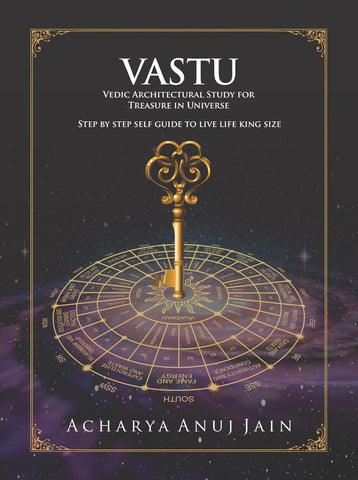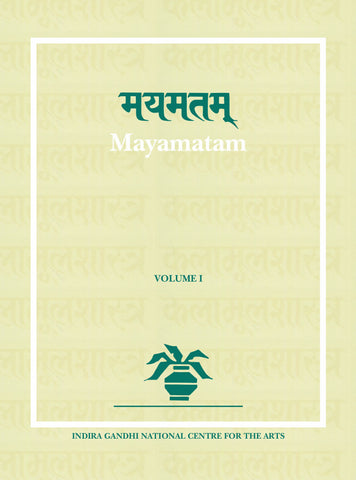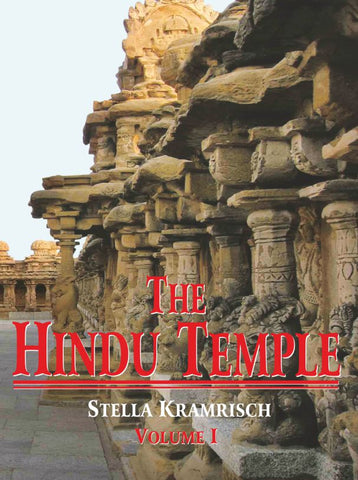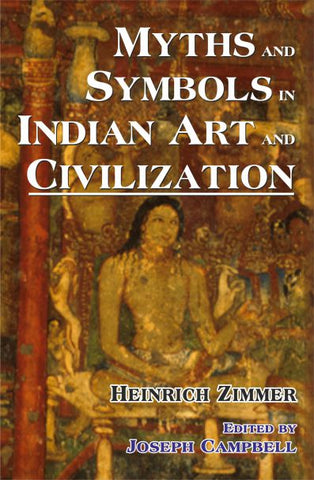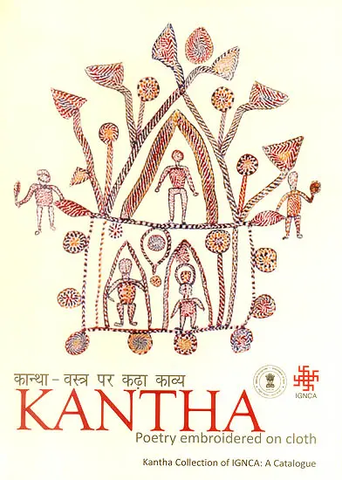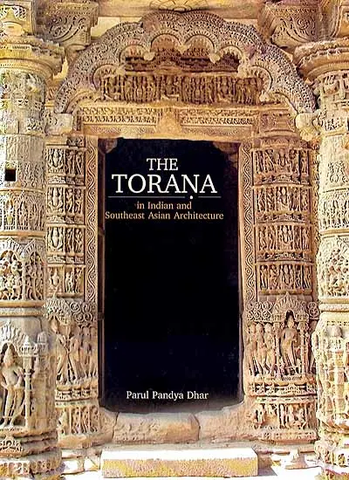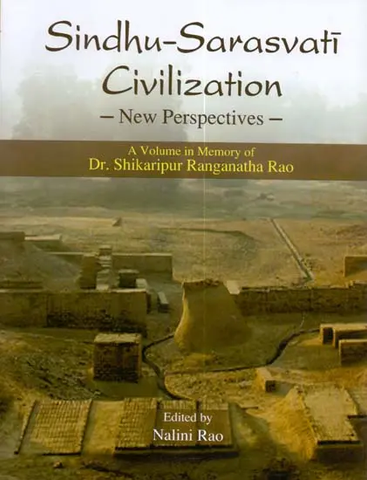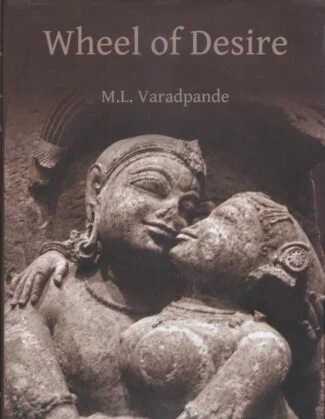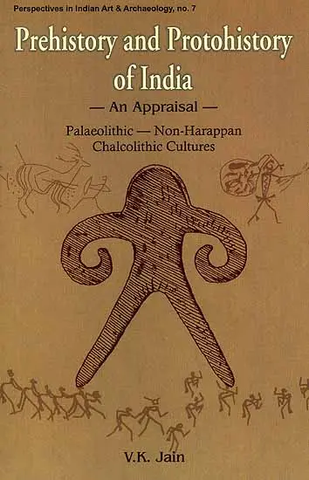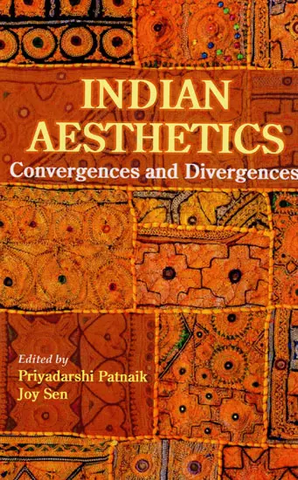Your cart is empty now.
It is a matter of certain amount of satisfaction that the first edition of this book, published in late 2002, was almost completely sold out by mide - 2006. Although, of late, I am not keeping good health, on the insistence of the students and the members of the Faculty of the National Museum institute, New Delhi, particulary Prof.(Dr.) Anupa Pande, head of the History of Art Department , who kept on going me to do it so very affectionately that I could not refuse. My friends Shri K. N. Dikshit and Sri Trivedi Madneshwar are to some extent also responsible for it. Having once decided to add three new chapters in this edition of the publication- one, dealing with the Rock Art, also called "Prehistoric Art" or "Stone Age Art", second dealing with the " Protohistric Art", or " The Bronze Age Art", same as " The Harappan Art", also called " The Indus" or "the Indus- Sarasvati Art," and the third dealing with the " Indian Art Beyond the Indian frontiers" encompassing the ancient art of some of the neighbouring countries located on the south and the east of India _ Sri Lanka , Myanmar, Thailand, Cambodia and Indonesia _ since these countries have shared India's culture for centuries together and producted a lot similar works of art and architecture within their own local matrix.
I will be failing in my duty if I do not record the most valuable assistance I received from my young colleagues in the Indian Archaeological Society, New Delhi, Sarvashri Suresh Bomble and S. Vijayakumar. On the Secretarial and Internet front, Savashri Mohit Srvastava, Lakhan Trivedi and Bharat Singh were of great help, for which I am thankful to them. Ms. Raj Rani, Librarian, helped me by providing most the books I needed.
Lastly, a word of appreciation for Shri Sushil Mittal, the Young and energetic owner of the D. K. Printworld, who lovingly placed a very tall order to me - "Kindly complete it within two weeks Course of the National Museum Institute who have expressed great desire to own the book very soon." Was it not Cruelty? But than I thoroughly enjoyed it.
Back of the Book The book is the study of the fundamental Principles of ancient Indian art and architecture, dealing with essentials of Hindu thinking and practice of art like the Hindu view of Godhead, iconography and iconometry, and symbols and symbolism in Hindu Art. It undertakes a survey of Indian art and Temple architecture from the 3rd century BCE through the mediaeval period. It elaborately views the various terms and concepts associated with the field of art and iconography like ,Mudras asanas, pithas , explaining the nature of Buddhist and Jain deities as well as those of Hindu sects like Saivism, Vaisnavism and Saktism.
Tracing the differences in conception of a Hindu temple, a Muslim Mosque and a Christian church, the research focuses particulary on the principles of visualization of symbols and signs in Hinduism and Christianity. It also reveals how the West has viewed Indian literature and art, exposing the inner contradictions of some European thinkers who while praising literary works of kalidasa and others condemned the Hindu images.
The work contains more than 400 illustrations, half-tone and line drawings, that make the discussion easy to comprehend for a range of readers- scholars, students as well as laymen.
Dr. S. P. Gupta, born is 1931, presently Chairman, Indian Archaeological Society , New Delhi, is a distinguished archaeologist and art historian . He has authored a Number of books including Disposal of the Dead and physical Types in Ancient India (1971), Tourism, Meseums and Monuments (1975), Archaeology of Soviet Central Asia and the Indian Borderlands two volumes (1978), The roots of Indian Art (1980) and Cultural Tourism in India (2002).
Dr. Shashi Prabha Asthana (1947- 1997) an expert in ancient Indian history and archaeology, won a number of prestigious scholarships and fellowships like Commonwealth Scholarship and British Institute Fellowship. She has authored several monographs and catalogues including History and Archaeology of India's Contacts with other Countries from earliest times to 300 BC (1976), Pre-Harappan Cultures of India and Its Borderlands (1985), Mathura Kala (200), Indian Art through the Ages and Indian Bronzes.
| Preface | v | |
| Preface to the Second Edition | vii | |
| Map of India showing important Art Sites | x | |
| Transliteration Chart | xv | |
| Map of India showing Sites of Principal Temples | xvi | |
| 1 | Rock Art in India | 1 |
| Various kinds of Rock Art | 2 | |
| Distribution and Chronology | 2 | |
| Bhimbetka | 3 | |
| The Purpose of Rock Art | 5 | |
| Dating the rock Art | 5 | |
| Other Forms of Stone Age Art & Architecture | 7 | |
| 2 | The Harappan Art | 9 |
| Materials Used | 11 | |
| Subject Matter & Common Motifs | 12 | |
| Stone & Bronze Sculptures | 13 | |
| Terracottas | 14 | |
| Steatite Seals | 15 | |
| Pottery Paintings, Metal Art, Glazing, etc. | 16 | |
| Harappan Architecture | 17 | |
| The Continuity of Harappan Traditions | 20 | |
| 3 | Fundamentals of Indian Art | 21 |
| Religion and Art | 22 | |
| Hinduism has no Hierarchy Amongst Gods | 23 | |
| Hinduism vis-à-vis Chistianity and Islam | 24 | |
| The Avataras of Visnu | 24 | |
| Buddha: The Life and Teaching | 25 | |
| Mahavira: The Life and Teaching | 26 | |
| Art and Architecture | 27 | |
| Sacred Structures | 27 | |
| Hindu Temple | 31 | |
| Temples of north India | 34 | |
| Temples of South India | 40 | |
| Temples of Orissa | 44 | |
| The Icons | 47 | |
| Symbols | 49 | |
| Hindu Iconography | 53 | |
| Siva | 53 | |
| Visnu | 54 | |
| Brahma | 55 | |
| The Sakta | 55 | |
| The Tantra | 63 | |
| Ihamrga | 66 | |
| Mythology: What it is in Hinduism? | 67 | |
| Buddha | 67 | |
| Bodhisattva | 68 | |
| Jina | 69 | |
| Basic Nature of Indian Art | 70 | |
| Paintings | 72 | |
| Nine Rasas | 75 | |
| Tempera and Fresco Techniques | 75 | |
| Differing Attitudes towards Indian Art | 77 | |
| The Role of European Travellers Coming with Christian Bias | 78 | |
| 4 | Indian Art in Historical Perspective | 81 |
| The Terminology | 81 | |
| Vedic Heritage | 82 | |
| Mauryan Art (fourth- third centuries BCE) | 83 | |
| Sunga- Satavahana Art (second- first centuries BCE) | 89 | |
| Kusana Art (First-third centuries CE) | 94 | |
| Bactrian, Mathura and Gandhara Schools of Kusana Art | 101 | |
| Gupta Art(fourth - Sixth centuries) | 103 | |
| Post-Gupta Art - Phase I (Sixth -eighth centuries) | 109 | |
| Maitrakas Art (Sixth- seventh centuries) | 109 | |
| Early Calukyan Art (sixth- seventh centuries) | 110 | |
| Rastrakuta Art (eight- ninth centuries) | 110 | |
| Pallava Art (Sixth - eighth centuries) | 111 | |
| Post- Gupta Art - Phase II (ninth- twelfth centuries) | 112 | |
| Gurjara- Pratihara Art (eighth -tenth centuries) | 112 | |
| Cola Art (ninth -twelfth centuries) | 112 | |
| Pala Art (eighth -eleventh centuries) | 115 | |
| Hoyasala Art (eleventh- thirteenth centuries) | 116 | |
| Orissa School (eighth- thirteenth centuries) | 117 | |
| Candela Art (tenth- eleventh eleventh centuries) | 118 | |
| Other mediaeval Monuments and Art Traditions | 119 | |
| North India | 119 | |
| South India | 119 | |
| 5 | Iconography : The Making of Cult Images | 121 |
| Iconometric Sources | 122 | |
| Texts governing the Northern Schools | 122 | |
| Texts governing the Southern Schools | 122 | |
| Non-iconometric or Sastriya Sources | 122 | |
| Tantras | 123 | |
| Other Works | 124 | |
| Some classifications of Images | 125 | |
| Cala or Portable Images | 126 | |
| Acala or Stationary Images | 126 | |
| Purna or Complete Images | 126 | |
| Apurna or Incomplete Images | 126 | |
| Santa Images or Images with Pleasing Countence | 127 | |
| Asanta Images or Images with Agitated Countenance | 127 | |
| Mudras | 127 | |
| Hasta- mudras or Hand Poses | 128 | |
| Pada- mudras or Foot Poses | 133 | |
| Sarira- Mudras or Body poses | 134 | |
| Attributes or objects held in hands | 135 | |
| Weapons of War and Chase | 135 | |
| Household and Agricultural Objects and Implements | 137 | |
| Fruits | 138 | |
| Flowers | 138 | |
| Animal World | 139 | |
| Musical Instruments | 139 | |
| Others | 140 | |
| Asanasor Sitting Postures | 141 | |
| Asanas or pithas(pedestals) | 142 | |
| Vahanas or Mounts | 143 | |
| Mukutas or Headgears | 144 | |
| Abhusana or Ornaments | 145 | |
| Karnabhusana or Ear ornaments | 145 | |
| Kanthabhusana or Neck ornaments | 146 | |
| Vaksabhusana or Chest ornaments | 146 | |
| Kati-abhusanaor Hip ornaments | 147 | |
| Pada- abhusana or Feet ornaments | 148 | |
| Bahu and Bhuja- abhusana or Armlets and Wristlets | 148 | |
| Nasa-abhusana or Nose ornaments | 148 | |
| Paridhana or Dress | 148 | |
| Bandha or Belt | 148 | |
| Vastra or Cloth | 148 | |
| Special dress of the Buddha | 149 | |
| 6 | Principals of Iconometry | 151 |
| Tala as main Unit of Measurement | 152 | |
| Angula as the First Unit of Measurements | 152 | |
| Height and Girth Measurements | 152 | |
| Measurements of Different Parts of the Body | 153 | |
| Uttam Madhyama and Adhama Measurements | 154 | |
| Some Textual Differences | 155 | |
| 7 | Indian Art Beyond the Indian Frontiers | 157 |
| Sri Lanka, 159; Myanmar, 162; Thailand, 166; Cambodia, 170; Indonesia, 176 | ||
| Select Bibliography | 183 | |
| Index | 187 |
Delivery and Shipping Policy
- INTERNATIONAL SHIPPING
- Rs.1000-1100/kg
- ESTD. Delivery Time: 2-3 weeks (depending on location)
- Bubble Wrapped with Extra Padding
- NATIONAL SHIPPING
- NCR: Rs. 30/half kg
- Standard: Rs. 80/half kg
- Express shipments also available on Request
- ESTD. Delivery Time: Ranging from 1-4 days up to 7 business days (Depending on your choice of Delivery)
- TRACKING
- All orders; national or international, will be provided with a Tracking ID to check the status of their respective orders
- Depending on the Shipping Service, Tracking ID may be used on their respective tracking portals
Frequently Asked Questions (FAQs)
Domestic Shipping: 3-4 Days (after shipping)
International Shipping: 1-2 weeks (based on your location)
You will receive an email once your order has been shipped or you can email us if you didn't receive tracking details (info@mlbd.co.in)
Every book that we sell is the latest edition except all the rare books
Yes, we do provide free shipping, only on domestic orders (within India) above Rs.1500










